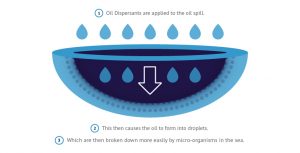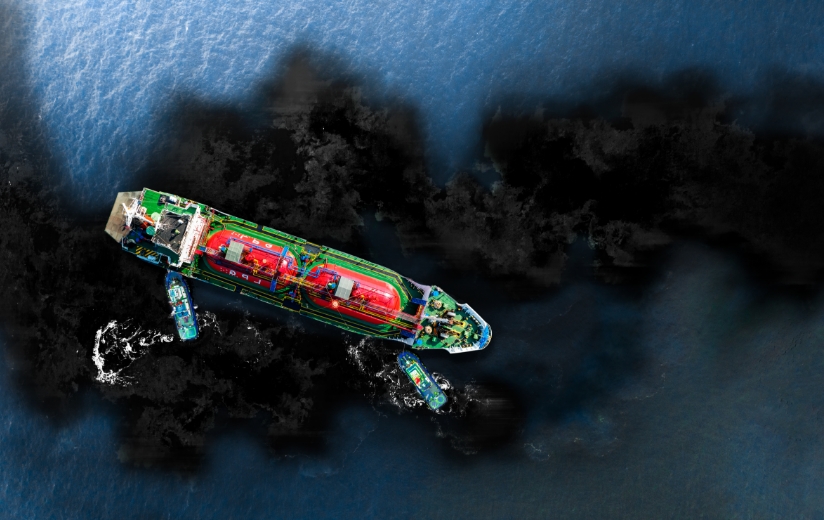Oil dispersants are an important tool for combatting oil spills. They help break up oil slicks, which can reduce harm to marine life, and speed up the oil’s decomposition.
Dispersants do not remove the oil from the water but they help break up the oil into smaller droplets which the water can then stir up and disperse. They can be sprayed onto spills by boat or plane.
Dispersants come with their own impact on the environment, so should only be used as part of a considered plan, taking into account the specific conditions of the spill.
Oil dispersants are particularly useful in high volume spills to prevent large oil slicks from washing ashore.
How do dispersants work?
When oil is spilled, it floats on top of water in a surface slick. The movement of the wind and tides works to slowly mechanically disperse the oil, but in a high volume spill this won’t happen fast enough to reduce harm to the marine environment. An oil slick poses particular risks to sea birds and mammals, especially if the oil slick washes up to shore.
Oil decays when it is broken down by naturally-occurring microbes in the seawater and sand. This can take months, years, or decades depending on the size of oil droplets. A dispersant is designed to break down oil into very small droplets so biodegradation occurs faster. It’s important to try and disperse oil slicks in high volume spills to make the dispersal and breakdown of oil as quick as possible.

When should you use a dispersant?
When there is an oil spill, it is important to act quickly to reduce harm to the environment. The correct approach depends on a number of factors. You need to consider the type of oil, the volume spilled, the sea conditions and the shoreline.
For instance, rougher waters disperse oil faster, and sandy beaches digest organic matter faster. If an oil slick washes ashore, it poses a much greater threat to marine birds. The speed and likelihood of this depends on the geography of the spill and where it occurred.
You also need to consider the impact of different intervention methods and weigh up the possible damage they can cause. Compounds in dispersants may come with health risks to fish, coral, birds, sea turtles and humans. You should take this into consideration, weighing it up against the potential damage of not chemically dispersing the oil.
Looking for an effective dispersant?
Once you have identified that a dispersant is the most suitable response, you will want to consider what type of dispersant is best, a topic we explored in our previous blog ‘What type of oil dispersant is best for your business?’
You can also take a look at AGMA’s DR 379 Oil Spill dispersant, which is a concentrated blend of emulsifiers that rapidly and effectively disperses oil spills and has MMO approval.
Sources:


